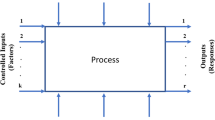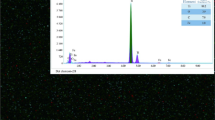Abstract
In robotic drilling of aircraft structures, reference holes are pre-drilled on aircraft structures and then detected by vision systems in the drilling process to compensate for the relative positioning errors between the robot tool center point and the workpiece, thus achieving improved position accuracy of drilled holes. In this paper, a novel elliptic contour extraction method based on salient region detection and optimization with snakes model is proposed for reference hole detection. Firstly, salient region detection is used for segmenting the region of reference hole from the background, and the resultant image of this operation is used for contours retrieving. Secondly, the initial contour of the reference hole is obtained from the retrieved contours using the voting method. Then the initial contour of the reference hole is further refined with the snakes model through energy minimizing of the snake. Finally, the elliptical parameters of the reference hole are computed by fitting an ellipse to the evolving result of the snake. The robustness and accuracy of reference hole detection with respect to noise and environmental disturbance are enhanced significantly through saliency estimation and optimization with the snakes model. Experimental results reveal that the proposed method can be applied to detect reference holes accurately and robustly in the jamming environment of aircraft assembly.















Similar content being viewed by others
References
Olsson T, Haage M, Kihlman H, Johansson R, Nilsson K, Robertsson A, Björkman M, Isaksson R, Ossbahr G, Brogårdh T (2010) Cost-efficient drilling using industrial robots with high-bandwidth force feedback. Robot Cim-Int Manuf 26(1):24–38
DeVlieg R, Sitton K, Feikert E, Inman J (2002) ONCE (one-sided cell end effector) robotic drilling system. In: SAE 2002 Automated Fastening Conference and exposition, Chester, ENGLA. SAE Technical Papers, pp 01–2626
Bi S, Liang J (2011) Robotic drilling system for titanium structures. Int J Adv Manuf Technol 54(5–8):767–774
Yao J, Kharma N, Grogono P (2005) A multi-population genetic algorithm for robust and fast ellipse detection. Pattern Anal Appl 8(1–2):149–162
Illingworth J, Kittler J (1988) A survey of the Hough transform. Comput Vis Graph Image Process 44(1):87–116
Nakanishi M, Ogura T (2000) Real-time CAM-based Hough transform algorithm and its performance evaluation. Mach Vis Appl 12(2):59–68
Duda RO, Hart PE (1972) Use of the Hough transformation to detect lines and curves in pictures. Commun ACM 15(1):11–15
Tsuji S, Matsumoto F (1978) Detection of ellipses by a modified Hough transformation. IEEE Trans Comput 100(8):777–781
Yuen H, Illingworth J, Kittler J (1989) Detecting partially occluded ellipses using the Hough transform. Image Vis Comput 7(1):31–37
Yip RK, Tam PK, Leung DN (1992) Modification of Hough transform for circles and ellipses detection using a 2-dimensional array. Pattern Recogn 25(9):1007–1022
Li Q, Xie Y (2003) Randomised Hough transform with error propagation for line and circle detection. Pattern Anal Appl 6(1):55–64
Basca C, Talos M, Brad R (2005) Randomized Hough transform for ellipse detection with result clustering. In: IEEE EUROCON the International Conference on computer as a tool, pp 1397–1400
Inverso S (2002) Ellipse detection using randomized Hough transform. Final Project: introduction to computer vision, pp 4005–4757
McLaughlin RA (1998) Randomized Hough transform: improved ellipse detection with comparison. Pattern Recogn Lett 19(3):299–305
Xu L, Oja E (1993) Randomized Hough transform (RHT): basic mechanisms, algorithms, and computational complexities. CVGIP: Image Underst 57(2):131–154
Xu L, Oja E, Kultanen P (1990) A new curve detection method: randomized Hough transform (RHT). Pattern Recogn Lett 11(5):331–338
Lu W, Tan J (2008) Detection of incomplete ellipse in images with strong noise by iterative randomized Hough transform (IRHT). Pattern Recogn 41(4):1268–1279
Gander W, Golub GH, Strebel R (1994) Least-squares fitting of circles and ellipses. BIT 34(4):558–578
Rosin PL (1993) Ellipse fitting by accumulating five-point fits. Pattern Recogn Lett 14(8):661–669
Fitzgibbon A, Pilu M, Fisher RB (1999) Direct least square fitting of ellipses. IEEE Trans Pattern Anal 21(5):476–480
Xie Y, Ji Q (2002) A new efficient ellipse detection method. In: Proceedings of IEEE 16th International Conference on pattern recognition (ICPR), pp 957–960
Ouellet J-N, Hebert P (2007) A simple operator for very precise estimation of ellipses. In: IEEE Fourth Canadian Conference on computer and robot vision (CRV), pp 21–28
Ouellet J-N, Hébert P (2009) Precise ellipse estimation without contour point extraction. Mach Vis Appl 21(1):59–67
Ge SS, He H, Zhang Z (2013) Bottom-up saliency detection for attention determination. Mach Vis Appl 24(1):103–116
Cheng M–M, Zhang G-X, Mitra NJ, Huang X, Hu S-M (2011) Global contrast based salient region detection. In: IEEE Conference on computer vision and pattern recognition (CVPR), pp 409–416
Kass M, Witkin A, Terzopoulos D (1988) Snakes: active contour models. Int J Comput Vis 1(4):321–331
Achanta R, Hemami S, Estrada F, Susstrunk S (2009) Frequency-tuned salient region detection. In: IEEE Conference on computer vision and pattern recognition (CVPR), pp 1597–1604
Olshausen BA, Anderson CH, Van Essen DC (1993) A neurobiological model of visual attention and invariant pattern recognition based on dynamic routing of information. J Neurosci 13(11):4700–4719
Itti L, Koch C, Niebur E (1998) A model of saliency-based visual attention for rapid scene analysis. IEEE Trans Pattern Anal 20(11):1254–1259
Ma Y-F, Zhang H-J (2003) Contrast-based image attention analysis by using fuzzy growing. In: Proceedings of the eleventh ACM International Conference on multimedia, pp 374–381
Hou X, Zhang L (2007) Saliency detection: a spectral residual approach. In: IEEE Conference on computer vision and pattern recognition (CVPR), pp 1–8
Achanta R, Estrada F, Wils P, Süsstrunk S (2008) Salient region detection and segmentation. In: Computer vision systems. Springer, Berlin, Heidelberg, pp 66–75
Harel J, Koch C, Perona P (2006) Graph-based visual saliency. In: Advances in neural information processing systems, MIT Press, Cambridge, pp 545–552
Liu W, Wang Y, Jia L (2010) An effective eye states detection method based on projection. In: IEEE 10th International Conference on signal processing (ICSP), pp 829–831
Yuille AL, Hallinan PW, Cohen DS (1992) Feature extraction from faces using deformable templates. Int J Comput Vis 8(2):99–111
Williams DJ, Shah M (1992) A fast algorithm for active contours and curvature estimation. CVGIP: Image Underst 55(1):14–26
Suzuki S (1985) Topological structural analysis of digitized binary images by border following. Comput Vis Graph Image Process 30(1):32–46
Bradski G, Kaehler A (2008) Learning OpenCV: computer vision with the OpenCV library. O’Reilly Media, Incorporated, Sebastopol
Simonovsky M (2011) Ellipse detection using 1D Hough transform. http://www.mathworks.com/matlabcentral/fileexchange/33970-ellipse-detection-using-1d-hough-transform
Otsu N (1979) A threshold selection method from gray-level histograms. IEEE Trans Syst Man Cybern 9(1):62–66
Ouellet J-N (2008) Dual ellipse fitting implementation for Matlab. http://vision.gel.ulaval.ca/~jouellet/code/DualEllipse/de.html
Wikipedia (2012) Precision and recall. http://en.wikipedia.org/wiki/Precision_and_recall. Accessed 22 Dec 2012
Acknowledgments
This research was supported by the National Natural Science Foundation of China (Project No. 51205352) and Science Fund for Creative Research Groups of National Natural Science Foundation of China (Project No. 51221004).
Author information
Authors and Affiliations
Corresponding author
Rights and permissions
About this article
Cite this article
Mei, B., Zhu, W., Yan, G. et al. A new elliptic contour extraction method for reference hole detection in robotic drilling. Pattern Anal Applic 18, 695–712 (2015). https://doi.org/10.1007/s10044-014-0394-6
Received:
Accepted:
Published:
Issue Date:
DOI: https://doi.org/10.1007/s10044-014-0394-6




